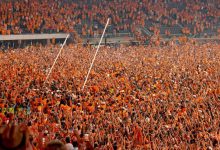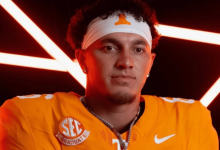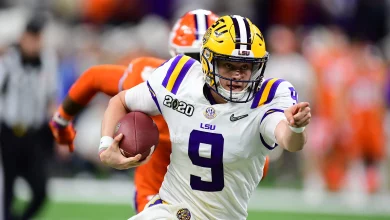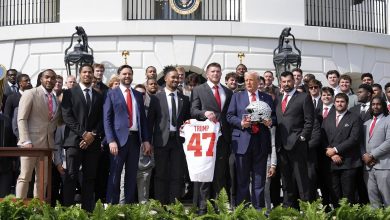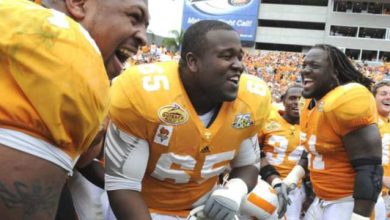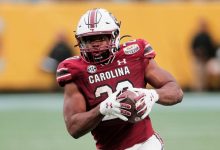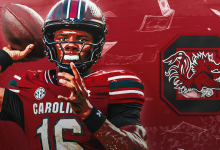Ohio judge dismissed Terrelle Pryor’s lawsuit against Ohio State, Big Ten, and NCAA, ruling he is not entitled to retroactive NIL compensation for his college career.
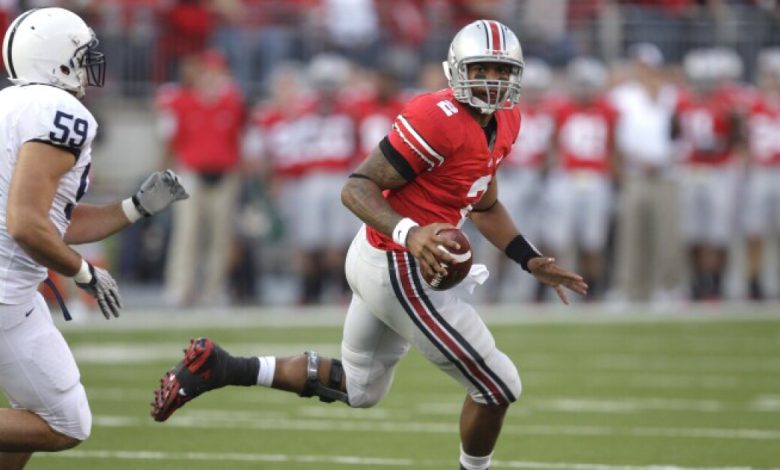
In the rapidly evolving landscape of college athletics, the issue of athlete compensation—particularly relating to Name, Image, and Likeness (NIL)—has been at the forefront of legal, legislative, and policy debates. One notable case involved Terrelle Pryor, a former Ohio State University quarterback, who filed a lawsuit against Ohio State, the Big Ten Conference, and the NCAA. Pryor sought retrospective NIL compensation for his college career, claiming he was unfairly deprived of earnings he could have generated during his time as a student-athlete.
However, the case was ultimately dismissed by an Ohio court, with the judge ruling that Pryor was not entitled to retroactive NIL compensation. This decision underscores the legal boundaries surrounding athlete rights and the NCAA’s authority, especially concerning historical claims for compensation. This article provides a comprehensive examination of the case, its legal basis, the court’s reasoning, and the broader implications for college sports and athlete rights.
Background of Terrelle Pryor and His Lawsuit
Terrelle Pryor played for Ohio State from 2008 to 2011. During his college career, Pryor became one of the most prominent figures in college football, known for his athleticism and leadership. His popularity translated into significant marketability, and many believed he could earn substantial income through endorsement deals and NIL opportunities.
Pryor’s lawsuit was filed against Ohio State, the Big Ten Conference, and the NCAA. His primary argument was that he was unfairly deprived of potential earnings stemming from his NIL rights during his time as a student-athlete. Pryor contended that the NCAA’s restrictions on athlete compensation—imposed during his college years—violated antitrust laws and his rights under federal and state law. He sought damages and retroactive compensation, asserting that he should be compensated for the NIL rights he could have exploited.
Legal Context of NIL and NCAA Regulations
The NCAA historically maintained a strict amateurism model, prohibiting athletes from earning income related to their athletic performance. This model aimed to uphold the integrity of college sports but has faced increasing legal and legislative challenges, especially regarding NIL rights.
Pre-2021 NCAA Policy: For decades, NCAA rules barred athletes from profiting from their NIL rights, and violations could lead to sanctions, including suspension and loss of eligibility. During this period, athletes like Pryor competed under these restrictions, participating in college sports with limited rights to monetize their NIL.
Legislative and Policy Shift in 2021: The landscape changed dramatically in 2021 when several states, including Ohio, enacted laws allowing NIL compensation. The NCAA also adopted a temporary policy permitting athletes to profit from NIL activities, provided they comply with state laws. These developments signaled a move towards recognizing athletes’ rights to monetize their NIL, but they also raised complex legal questions about retroactivity and existing restrictions during Pryor’s era.
Legal Issues in Pryor’s Case: The core legal dispute revolved around whether Pryor could claim retroactive NIL compensation for his college years when the NCAA’s restrictions were in force. Courts have generally upheld the NCAA’s authority to regulate amateurism, emphasizing that existing rules govern athletes’ participation and earnings during their collegiate careers.
Details of Pryor’s Lawsuit and the Court Proceedings
Pryor’s lawsuit argued that the NCAA, Ohio State, and the Big Ten conspired or failed to provide him with opportunities to profit from his NIL rights during his college years. He claimed that these restrictions were unlawful and that he was owed compensation for the use of his NIL during his time as a student-athlete.
Legal Arguments:
- Antitrust Violation: Pryor asserted that NCAA restrictions constituted an illegal restraint of trade under federal antitrust laws.
- Unfair Deprivation of Earnings: He argued that he was deprived of potential income and NIL value during college.
- Retroactive Compensation: Pryor sought damages for past NIL rights, claiming that the restrictions were unlawful at the time.
Defendants’ Position:
- The NCAA and associated parties maintained that NCAA rules are protected under the “state-action doctrine,” which shields certain private associations’ regulations from antitrust scrutiny if they serve legitimate purposes—such as preserving amateurism and the integrity of college sports.
- They argued that NIL rights are prospective, and recent policy changes allowing athletes to profit from NIL are not retroactive.
- The defendants emphasized that Pryor voluntarily participated under the rules in effect at the time and that courts should not impose retrospective compensation claims.
The Court’s Ruling and Reasoning
In dismissing Pryor’s lawsuit, the Ohio court relied on several legal principles:
- NCAA Authority and Amateurism: The court reaffirmed that the NCAA’s rules regarding amateurism are protected under the “state-action doctrine,” which allows private associations to regulate their members’ conduct without violating antitrust laws, provided their rules serve legitimate purposes.
- Prospective Nature of NIL Rights: The court emphasized that NIL rights are fundamentally prospective, especially given recent legislative changes. The court held that the NIL rights now recognized are not applicable retroactively to Pryor’s era when restrictions were in place.
- Participation Under Existing Rules: The court noted that Pryor voluntarily participated in college athletics under the NCAA’s rules at the time. Courts generally uphold the principle that athletes participating under existing regulations cannot claim retrospective rights or damages.
- Legal Precedents: The court cited previous rulings that have upheld NCAA regulations against antitrust challenges, reinforcing that the NCAA’s authority to regulate amateurism remains valid.
Outcome:
The court dismissed Pryor’s claims for retroactive NIL compensation, effectively ruling that he has no legal standing to recover earnings for his college career under the current legal framework.
Implications of the Court’s Decision
The dismissal of Pryor’s lawsuit has several implications for athletes, institutions, and the future of NIL rights:
- Limits on Retroactive Claims: The ruling clarifies that athletes cannot seek compensation for past NIL rights when restrictions were in place, especially when recent changes are prospective in nature.
- Reinforcement of NCAA Authority: The decision underscores the NCAA’s legal authority to regulate amateurism and NIL rights, reaffirming that existing rules are within their scope.
- Impact on Future Litigation: While this case was dismissed, it does not preclude future legal challenges, especially as NIL rights become more entrenched and as legislation evolves to support athlete compensation.
- Focus on Future Opportunities: The emphasis shifts toward current and future NIL opportunities, with athletes encouraged to capitalize on the evolving legal landscape rather than seek retroactive damages.
Broader Context and Future Outlook
The Pryor case exemplifies ongoing debates about athlete compensation and the legal boundaries of NCAA authority:
- Legal Challenges and Reforms: As NIL laws continue to expand across states and at the federal level, legal challenges may arise questioning the scope and fairness of NIL regulations, particularly concerning past restrictions.
- Uniform Federal Legislation: There is increasing advocacy for federal NIL legislation to create a uniform framework for athlete compensation, potentially resolving issues related to retroactivity and state-by-state discrepancies.
- Equity and Fairness: Discussions extend beyond legality to ethical considerations—whether current NIL policies are sufficient to ensure fair compensation for college athletes who generate billions in revenue for their institutions.
- Evolving Legal Landscape: Courts are likely to continue examining the NCAA’s authority, especially as more athletes seek compensation and as legislative reforms are enacted. The Pryor case sets a legal precedent that limits retroactive claims but leaves open future avenues for athlete rights.
The Ohio court’s dismissal of Terrelle Pryor’s lawsuit against Ohio State, the Big Ten, and the NCAA marks a significant moment in the ongoing evolution of NIL rights and college sports law. The ruling reinforces the principle that athletes cannot claim retroactive NIL compensation for periods when restrictions were in place and affirms the NCAA’s authority to regulate amateurism under existing legal doctrines.
While this decision limits past claims, it also highlights the importance of focusing on prospective NIL opportunities, which are now available to college athletes under evolving laws and policies. As NIL continues to develop, future legal, legislative, and policy debates will shape the rights and compensation of college athletes for years to come.
In sum, Pryor’s case underscores the complex intersection of law, sports governance, and athlete rights—an area poised for continued transformation in the era of NIL monetization.

